Aelia Augusta Italica is a Roman town built for veterans of Scipio's campaigns, situated at Santiponce near Seville. It is a 'must see' for anybody interested in the Romans in Andalucia.
By Nick Nutter | Updated 5 Sep 2022 | Seville | Places To Go |
Login to add to YOUR Favourites or Read Later
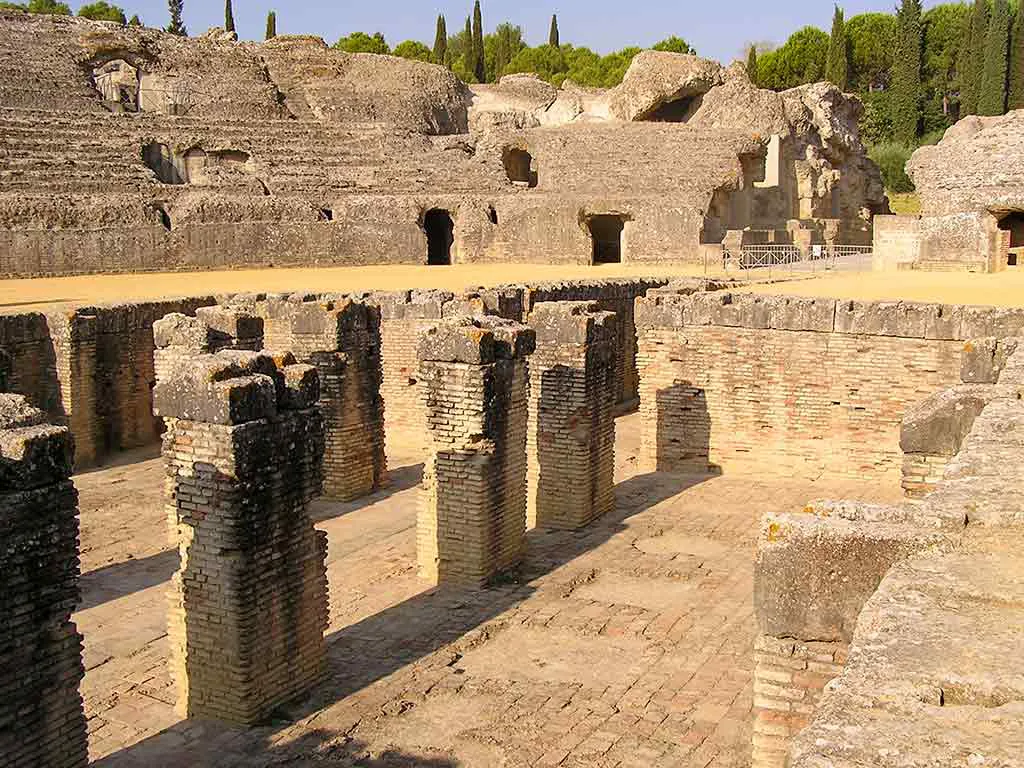
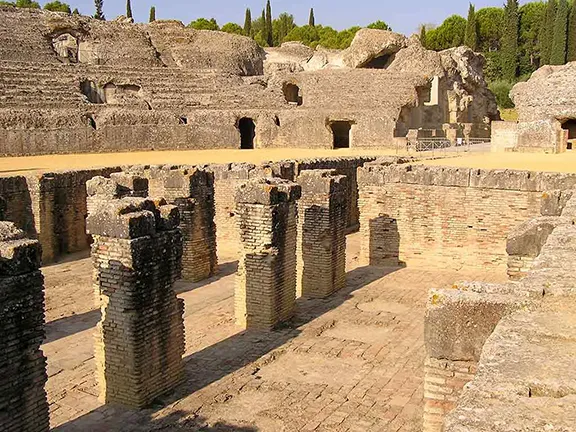
Amphitheatre at Colonia Aelia Augusta Italica
In 53 AD a mixed Iberian Roman family gave birth to a child who would become a soldier emperor presiding over the greatest military expansion of territory in Roman history – Trajan. In 76 AD another family of mixed blood gave birth to the emperor that would succeed Trajan and become almost as famous - Hadrian. Both Hadrian and Trajan have the distinction of being born of provincial families outside of Italy in a Roman town built for army veterans that would become known as Aelia Augusta Italica.
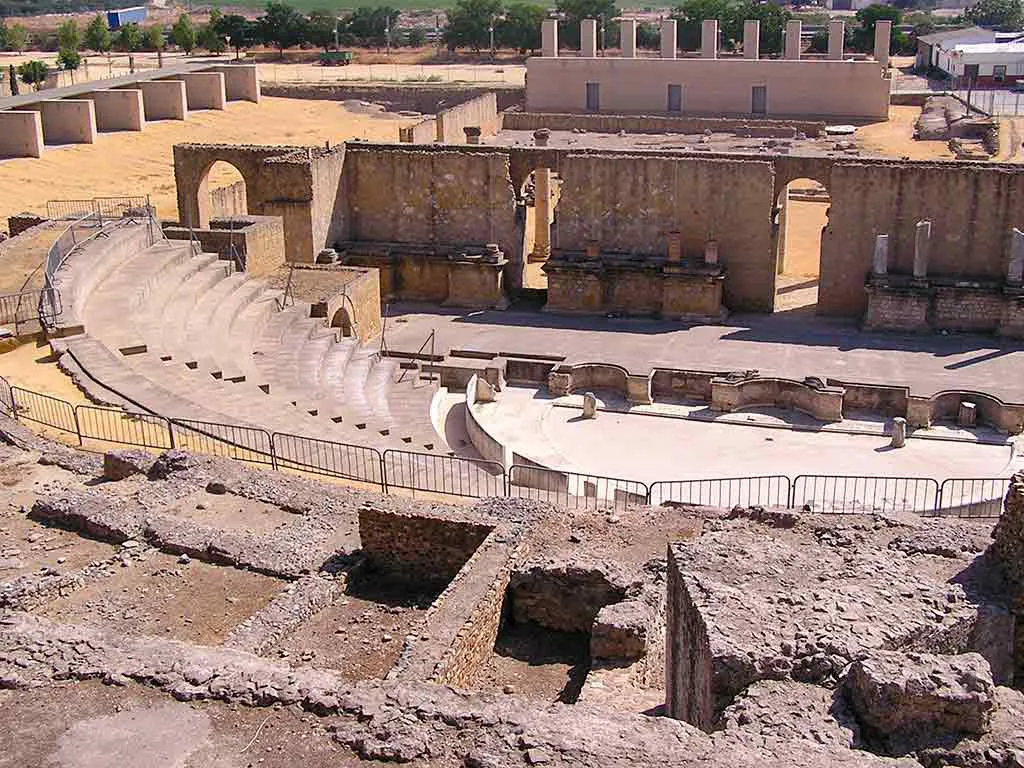
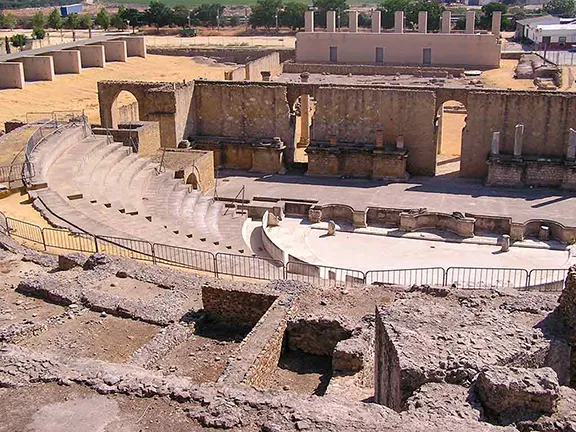
Roman Theatre Santiponce
Santiponce, a small town of perhaps 8,000 people, sits on a small hill some 9 kilometres northwest of Seville. It is evident that at one time the Rio Guadalquivir flowed below the hill but then found a new course further south. The town appears to have no great significance having been left behind by both the river and time. But it was not always so. A small Iberian settlement existed there when the Romans first arrived in Andalucia in 208 BC.
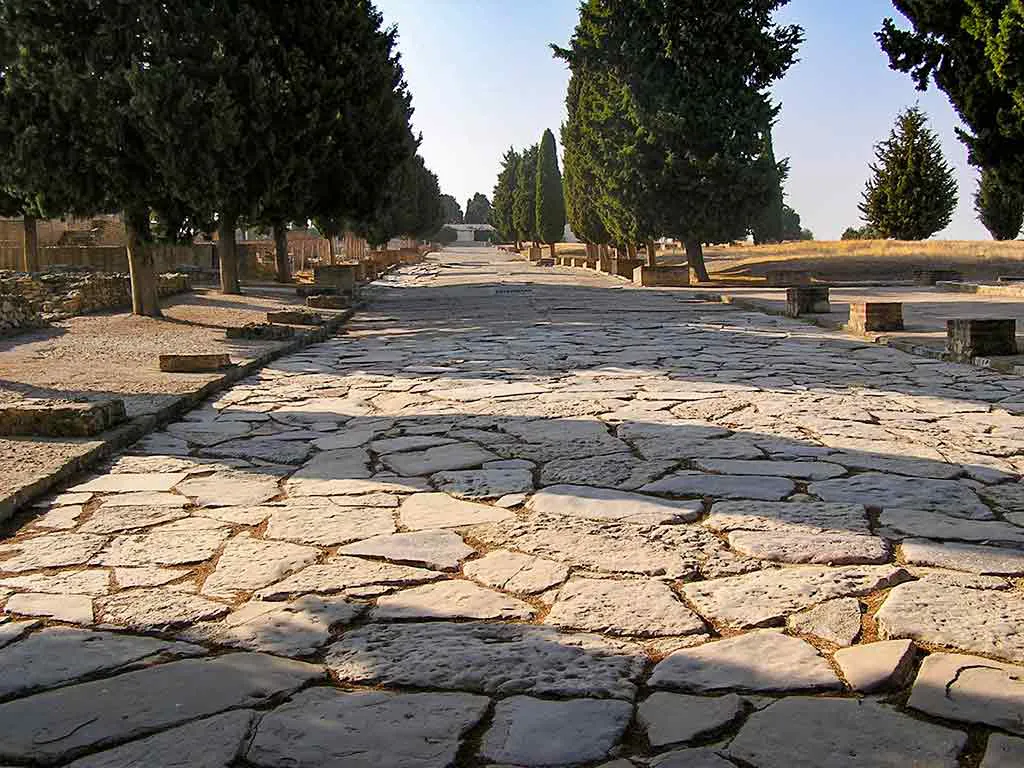
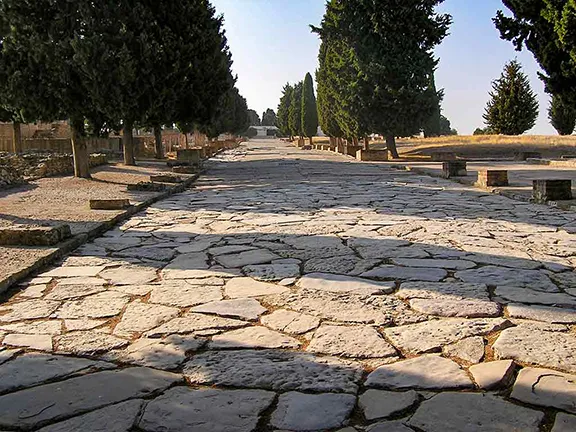
Amphitheatre Italica
The Roman General Publius Cornelius Scipio and his men had landed in Carthago Nova (Cartagena) in 210BC to deal with the Carthagenians during the Second Punic war. He took the city and then fought a series of major actions and numerous skirmishes as he fought his way through Carthaginian held territory; at Baecula (Bailen in Jaen Province) Ilipa (Alcala del Rio in Seville Province) and Gades (Cadiz). By 206BC Scipio had driven the Carthaginians from southern Spain. He needed somewhere to house his veterans and a strategic position from which to control the area. The small settlement that is now Santiponce was ideal.
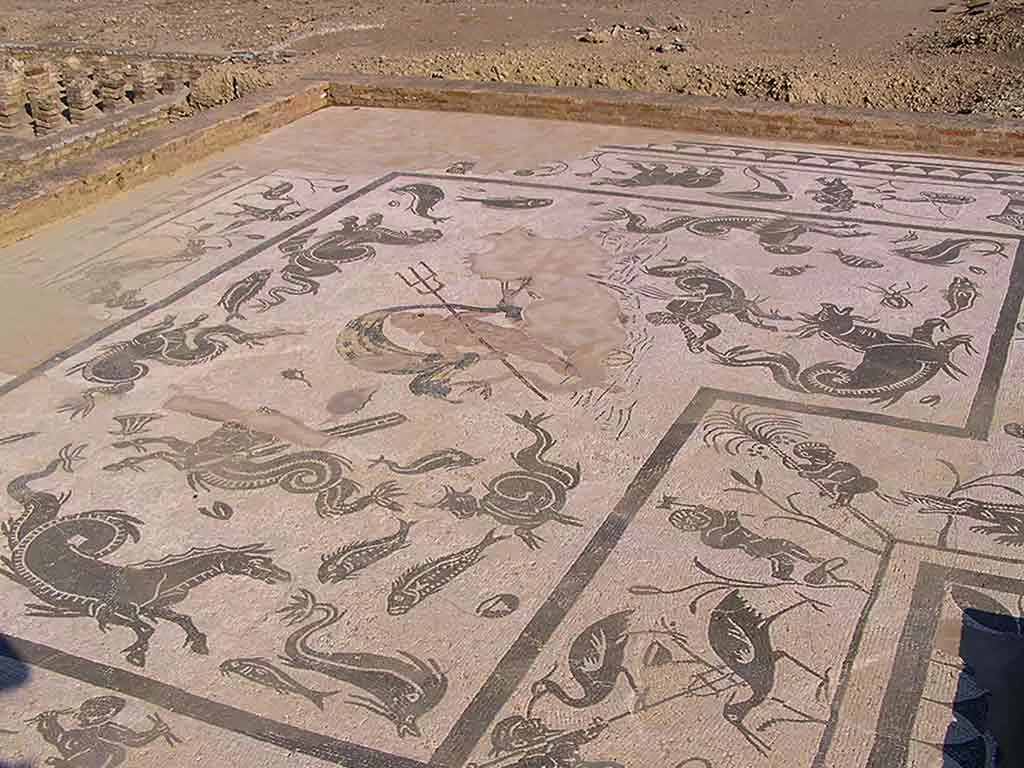
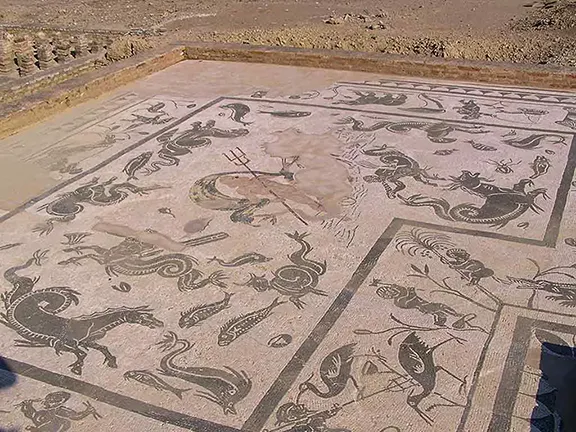
African Scene Mosaic Italica
The Romans called their new city Italica and it was built in two parts. The general housing and a theatre were built on the site of the present town, extending the existing Iberian settlement. Apart from the theatre, this section is hidden beneath the town. It was during the Roman Empire period that Italica suddenly blossomed.
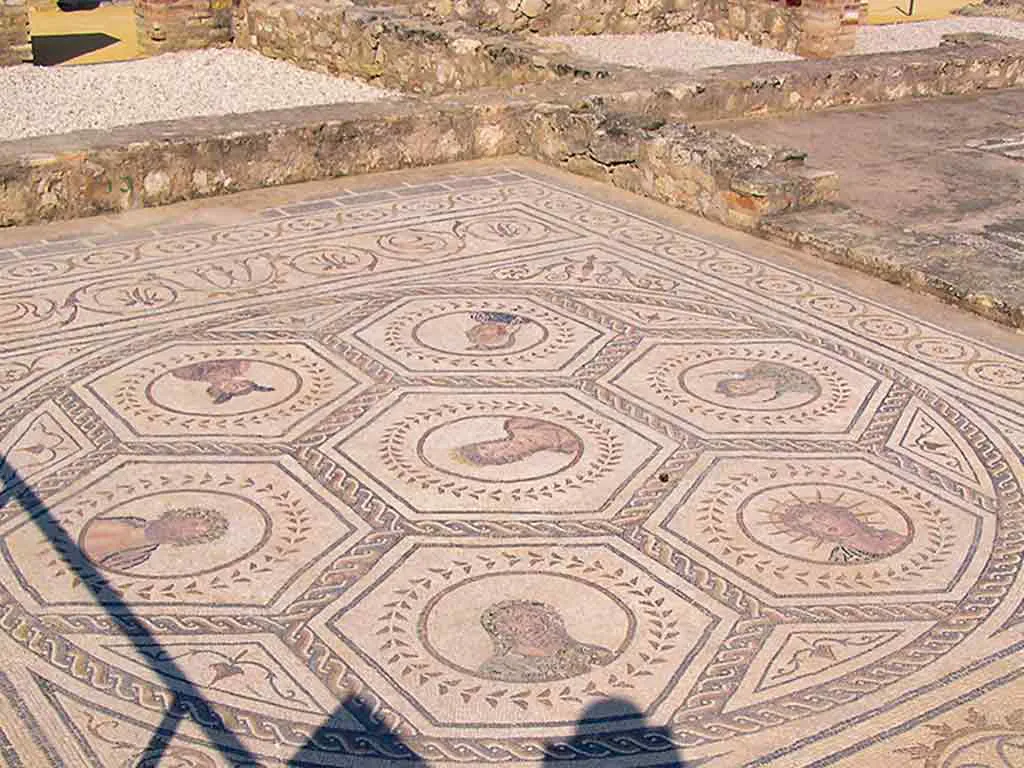
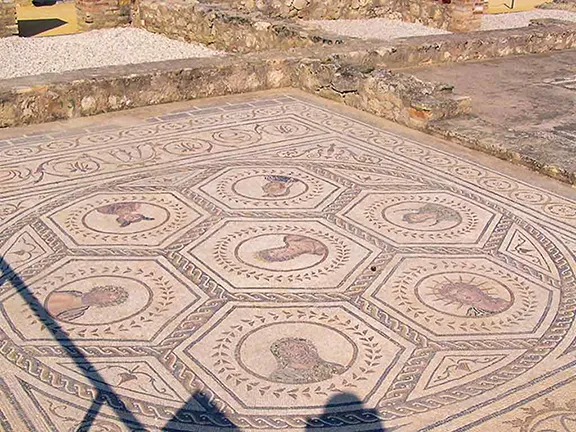
Mosaic of the Planets Italica
It was Hadrian who reigned from 117 AD to 138 AD that decided to expand Italica. He built sumptuous villas with wonderful mosaic floors, temples, including a Trajaneum commemorating his predecessor Trajan and an amphitheatre that would seat 25,000 people, the third-largest in the Empire. The amphitheatre was much larger than that required to seat the local population, half the size of the Colosseum in Rome, and was used for spectaculars that attracted audiences from far afield. Such shows were sponsored by the rich citizens of ‘urbs nova’ or new city, of Italica as they demonstrated their wealth and importance. Italica was promoted from the status of Municipium to Colonia and took the name Colonia Aelia Augusta Italica.
This period of conspicuous expenditure did benefit one particular section of the community, the mosaic artists, as property owners vied with each other to have the most extravagant mosaic floor.
Amongst the mosaics still in place, is one virtually complete. The ‘Mosaic of the Planets’ It depicts the goddess Venus surrounded by her acolytes, Jupiter, Mercurio, Marte, Selene, Helios (with the halo) and Saturno. (In those days it was believed the Sun circled the Earth hence its position on the perimeter).
However, Colonia Aelia Augusta Italica was never completed. It was literally and politically, built on shifting sand. The foundations and substrata could not support the massive columns built on them and the political situation in the Empire started to worsen following the Antonine Plague of 165 – 185 AD. The 200 year period following the plague was a time for which the historian Gibbon coined the phrase ‘The Decline and Fall of the Roman Empire.’
Italica declined in parallel with the Empire, a process exacerbated by the Guadalquivir river having moved its courses away from the town. The city of Hispalis, Seville, gained ascendancy. During Mediaeval times much of the building stone was reused locally and once again Italica became a small town on a hill nine kilometres northwest of Seville.
The well preserved Amphitheatre
The Theatre
The street of Mosaics
For opening times of Italica, click here